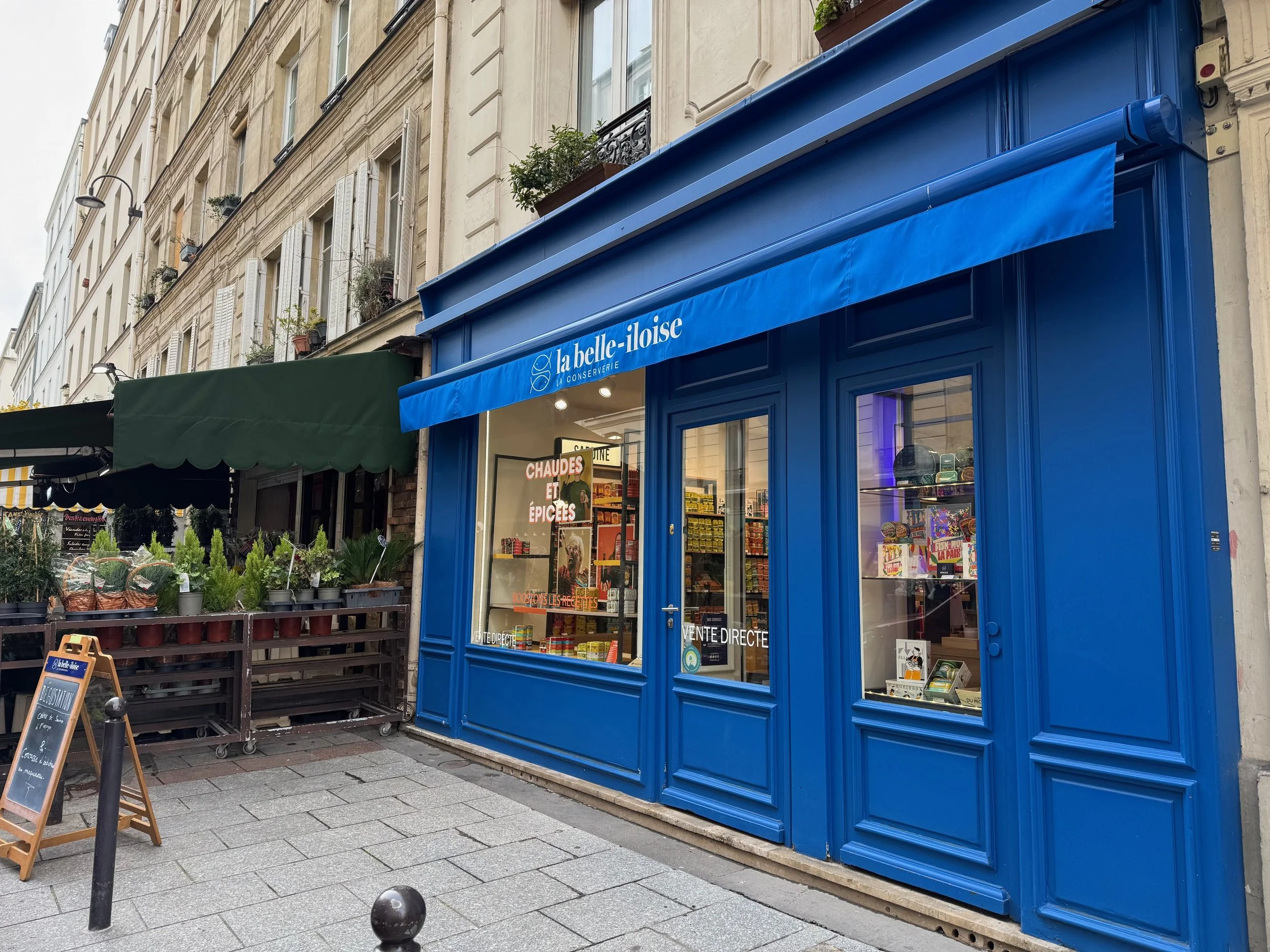Sardines - a Master Class in Premium Branding?
During my travels this spring, I stumbled upon something unexpectedly inspiring—tin fish. Often overlooked in the U.S., this humble product has been elevated to an art form in places like France, and Portugal. What started as a casual discovery evolved into a standout experience from my travels, and an inspiration for how thoughtful branding, packaging, and retail can transform even the most ordinary product into something truly special.
My first stop-me-in-my-tracks experience happened when we stumbled on the La Belle-Iloise on a market street in Paris. From store front to check out, sardines, mackerel, and octopus were merchandised with such beauty and care they looked like luxury gifts. Then in Portugal, I saw it again, at Mercado do Bolhão, tin fish so beautiful I had to stop. I couldn't help but think: there are so many lessons here for brand builders in every category.
Here are six tin fish insights I took home with me:
1. Elevate the Everyday
Commodity products don’t have to feel ordinary. Incredible colors, merchandising, and an obvious love of culture transformed canned fish into artisanal treasures. Exceptional storytelling and design delivered an experience so compelling it was nearly impossible to walk away empty-handed. If sardines can claim a place of luxury, imagine the possibilities for other everyday categories. José Gourmet in Portugal showcase this beautifully.
Mercado do Bolhão, Portugal
2. Storytelling transcends product categories
What made the products of Jose Gourmet and La Belle-Iloise, so extraordinary was how much story was in every can. Whether it’s about skilled fishermen, premium ingredients, unexpected flavors, or decades of heritage, each tin invites consumers into a rich narrative. This kind of storytelling builds deep emotional connections that transcend the product itself, inviting the consumer into a world of a flavorful escape.
3. The Power of Packaging to Differentiate and Clarify
Packaging is far more than decoration—it’s a strategic tool that guides customers’ choices. The tin fish brands of France and Portugal made impactful use of very limited box space. Bold colors, distinct illustrations, and clear messaging help shoppers quickly understand what they’re buying, guiding people through flavor and texture options to the right fish for them. Smart packaging reduces confusion, cuts through shelf clutter, allows each product to have a reason for being, and elevates perceived value.
La Belle-Iloise, France
4. Control the Retail Experience
From its striking storefront and captivating window displays to a checkout experience that felt truly special, every moment La Belle-Iloise was thoughtfully crafted. They use their stores to control the narrative and customer journey. In-store activations help them build their marketing list and forge direct relationships. Their branded merchandise helps set the mood and captures the beauty of their products so well even non-fish lovers want to take something home. Coupled with attentive and knowledgeable service, it’s an immersive retail experience that builds lasting loyalty.
Even in a mixed marketplace, tin fish merchandising was unlike anything I expected. These products weren’t hidden on discount shelves; they were showcased front and center, often color-coded and paired with curated tasting experiences, wine, or crackers. Some brands even offer factory tours or are featured in museum shops, turning retail into a stage for brand storytelling.
La Belle-Iloise, France
5. Blend Nostalgia with Innovation
These brands strike a perfect balance by honoring their vintage roots while infusing a modern twist that aligns beautifully with today’s aesthetic trends. Nostalgia evokes trust and warmth, while contemporary design and innovative flavors keep the brands relevant, and newsworthy—a combination that cuts through the noise.
6. Sustainability as Strategy
Sustainability is woven into the fabric of these brands, not treated as an afterthought. From responsibly sourced fish to transparent supply chains, they tell a bigger story about environmental stewardship—a narrative increasingly important to today’s consumers.
____
Final Thought
Discovering tin fish so artfully presented and thoughtfully branded sparked my imagination for the vast potential in reimagining everyday products. For those of us building brands, it’s a call to rethink the familiar, craft authentic stories, and design experiences that surprise and delight customers. If tin fish can become a symbol of premium craftsmanship, what opportunities are waiting for other categories?




